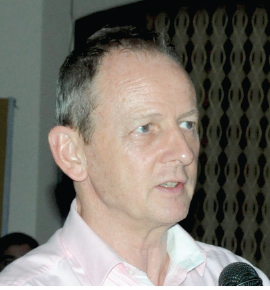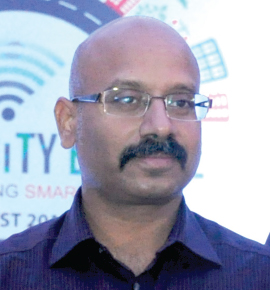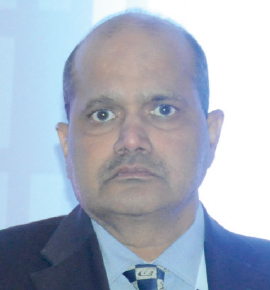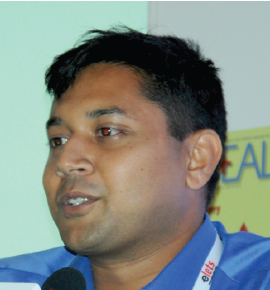
Making citizens’ lives easy
There is not a clear definition of Smart City, but it is about introducing online services for making citizens’ lives easy to save their time and increase efficiency of the Government functionaries. For the first time in the history of mankind between 2010 and 2015, more people lived in the cities than in the countryside that has never happened before in the world. It would increase to 70 per cent by 2050. Now, India’s urbanisation rate has been slower than the world’s, but it is now gradually escalating. Over the next few decades, a majority of population of India is going to live in cities. If everybody started to have cars, then the world will become a terrible place. We need to have better transport system in place, especially non-motorised mode. We have been working in Indore and have built Bus Rapid Transit System (BRTS) with local officials. We also found that the number of people have increased from 10,000 to 50,000 a day and among those 40,000 new commuters, 30 per cent of them are women who were not comfortable travelling in public transport.
Being objective

Bhopal is the first city to have already initiated the process of building itself into a smart one. The Madhya Pradesh Government has started the process of consultation, debate and public involvement. A Smart City has its own objectives. Around the world there are various Smart Cities in the US, UK, Europe and Korea and now India is on the bandwagon as well. The idea is that the cities have to compete globally. Each city in itself is a destination of investment. But how can it be made sure that the investment comes to Bhopal or Indore or Jabalpur or anywhere else? The first thing is a city has to be seen as competitive and a place to innovate, where people can come and innovation can take place. It’s not just a place where one can get drinking water, energy, roads and any other facility. We can get all the said facilities in hundreds of cities but what is different in a city needs to be highlighted.
Making the cities safe

When we talk about Smart Cities and their safety, the role of police comes into action. In my opinion, not only the cities should be smart, but we should have smart laws, smart police enforcement, quick justice and smart prosecution too. There is a theory called ‘broken window’ in the western law enforcement. The concept says if one person sees the other breaking the law and not being penalised for it, there is a tendency that the law-abiding citizen also becomes the law-breaking citizen. In order to have smart policing, we need to select the best manpower. For instance, a majority of constabulary in Madhya Pradesh are educated upto 10th standard only, and they do not possess computer skills. Thus, we have to impart high-standard training to our police personnel, especially those from the lower ranks.
Providing effective service delivery
The main objective of smart policing is to deter criminals from committing crimes, along with providing an effective service delivery. The key components of smart policing are: surveillance equipment, network connectivity, data centre for storage, command and viewing centres, collaborative monitoring and helpdesk. In addition, alarms, sensors and video surveillance also play a major role in a Smart City. Critical Incident Management is also important, especially during law and order situation because an effective and timely response by the police can handle a situation well. In Punjab, we have thrown open Saanjh Kendra (community policing centres) at police stations at sub-divisional and district levels. Here, people need not turn up at police stations to file their complaints and get harassed; instead they can go to these kendras where their complaints would be filed. Moreover, police personnel are deployed in plain clothes at the said Saanjh Kendra, who are totally independent of the local police.
Improvising the traffic system
There are certain aspects of traffic that are integral with city planning. Every year, in India, around 1.5 lakh people are losing lives due to road accidents, indicating that traffic system needs to be improved. In Cyberabad, we have introduced modern traffic-signaling system—Hyderabad Traffic Integrated Management System (HTIMS), integrated e-challan system, cab registration system, social media and mobile applications to disseminate information. The HITMS in Cyberabad covered 221 traffic junctions which are networked and adaptive and connected with central control room. We also have vehicle actuated mode which measures the flow of traffic and then changes the signals automatically. All these are networked and their timings can be set. The e-challan system kicked off in 2007 is getting a robust response and is being improved on a regular basis. Interestingly, we have also given small cameras to traffic police personnel who can wear those to record conversation with the offender to maintain transparency while penalising any traffic violator.
Be a part of Elets Collaborative Initiatives. Join Us for Upcoming Events and explore business opportunities. Like us on Facebook , connect with us on LinkedIn and follow us on Twitter, Instagram.
















